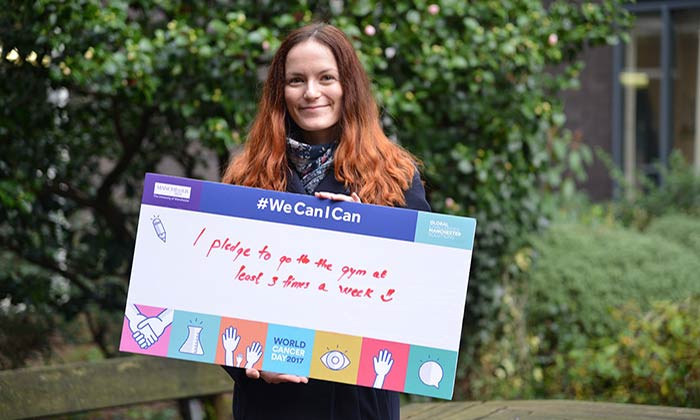Communications case study: World Cancer Day 2017
08 Mar 2017
What started as an idea to mark an international day of observance became a significant University research beacon event that united diverse disciplines and institutions. How did this come about?

The event
Marking World Cancer Day at a university that has cancer as one of its five research beacons seems like an obvious step. But marking it in a way that celebrated Manchester’s distinctive interdisciplinary approach, as well as our focus on research impact, required a little more imagination.
The ensuing public engagement event, held one day before World Cancer Day, brought together scientists and healthcare professionals to showcase leading advances in cancer treatment and therapies. They also provided health checks and advice on lifestyle to help prevent, or enable early detection of, cancer. It was the University’s first event that involved all our key partners in tackling cancer.
People and planning
The Communications, Engagement, Marketing and Student Recruitment team in the Faculty of Biology, Medicine and Health conceived and planned the event, aiming to illustrate the wide scope of our involvement by including all our cancer research partners.
The event soon gained further communications support from teams at Cancer Research UK (CRUK), The Christie NHS Foundation Trust and Manchester Cancer Research Centre (MCRC).
The teams worked together to set clear objectives and target priority audiences, identifying appropriate messages to engage with these audiences as well as with internal stakeholders, University staff, students and alumni.
Promotional tactics
All the University’s traditional and online communications channels were used, including central University and Faculty social media, eUpdate, StaffNet, the University website and the Dean’s Update.
Collateral produced included posters displayed across campus to promote the event; digital artwork for social media, websites and the Alan Gilbert Learning Commons screen; and a range of material issued by The Christie, MCRC and CRUK.
Results
- 40,951 impressions and 1,908 engagements on social media (Facebook, Twitter, Instagram)
- Engagement rate for Faculty social media of 4.66% (compared to an average of around 1%)
- #WorldCancerDay hashtag trended in Manchester between 12 noon and 2pm on the day of our event – one day before the hashtag would have been expected to trend
- Positive feedback from all exhibitors, who welcomed the opportunity to meet other partner organisations (some for the first time)
- Positive feedback from visitors (especially around health checks and free fruit!)
Top tips
“Start planning as soon as you can,” advises Communications and Marketing Manager (Cancer Beacon) Kate Tidman. “We had 12 weeks to organise and promote the event, including Christmas break. We achieved so much in such a short time, but a longer lead-in time would have given us scope to do even more. We’re already thinking about next year’s event.”
Find out more about our World Cancer Day event.
